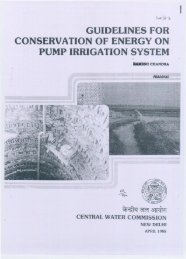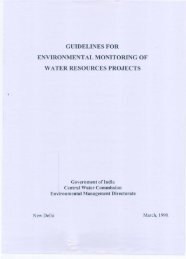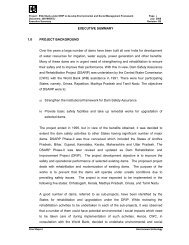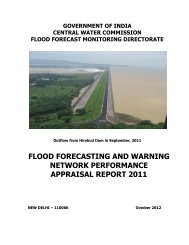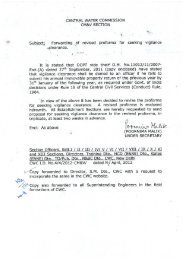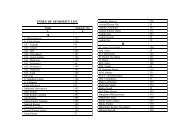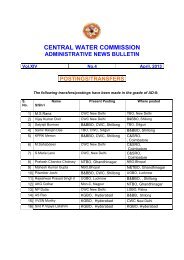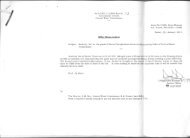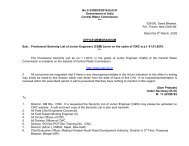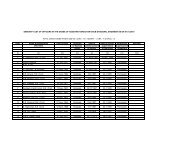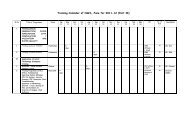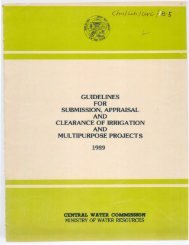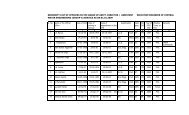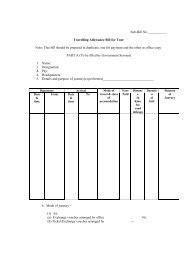GUIDE LINES - Central Water Commission
GUIDE LINES - Central Water Commission
GUIDE LINES - Central Water Commission
You also want an ePaper? Increase the reach of your titles
YUMPU automatically turns print PDFs into web optimized ePapers that Google loves.
for one month requirement (during closure period for maintenance<br />
and repairs) or full requirements for the period when the canal<br />
is not running.<br />
f) The location and details of storages to be created are to be<br />
identified by the Public Health Department and indicated to the<br />
Irrigation or W.R. Department of respective States.<br />
g) When the water supply is to be drawn from the canal system it<br />
must take into consideration that the water may be siphoned off<br />
in the higher reaches particularly during the dry season when the<br />
canal is not running full. In such cases construction of a byepass<br />
canal or pipe system should be considered. In the case of<br />
closed conduit sy.stems, there will be no piping and contamination<br />
is also prevented.<br />
h) Supplies for drinking water should be drawn from a canal or a<br />
branch whose design discharge capacity is more than 5 times the<br />
drinking water requirements subject to a munimum of 2·cumecs.<br />
i) As far as possible drawal of water for drinking purposes downstream<br />
of the urban settlements should be avoided as these are<br />
potential sources of contamination.<br />
The requirements for drinking water are generally projected for a period<br />
of about 30 years. However, the reservoir projects are planned, considering<br />
that life of the ~eservoir is 100 years for Major Projects and 50 years for<br />
Medium Projects. It would therefore be desirable that provisions for drinking<br />
water requirements should also be made accordingly in consultation with concerned<br />
State Departments. The drinking water requirements should take into account<br />
the transit losses in the conveyance system and also evaporation losses in the<br />
storages to be created. Generally the drinking water supply component<br />
should be taken up and completed simultaneously with the canal system for<br />
irrigation. Till such time the water supply component is not ready, the water<br />
earmarked for drinking purposes can be utilised for irrigation.<br />
2.4 Apportionment of Cost of Irrigation/Multipurpose Projects to<br />
<strong>Water</strong> Supply Component<br />
As already mentioned above, in planning of irrigation/multipurpose<br />
projects, primary consideration should be given to provision for drinking water<br />
supply.<br />
For apportionment of cost of irrigation/multipurpose projects to the<br />
water supply component the procedure as indicated by the then Ministry of<br />
I & P (Govt. of India) in their letter No.l(6)/62-Policy,dated 17th April, 1967,<br />
addressed to all the State Govts. may be adopted (See Annexure-IV).<br />
For the best utilisation of available water, the water supply component<br />
should take final shape concurrently alongwith the irrigation project. It is



